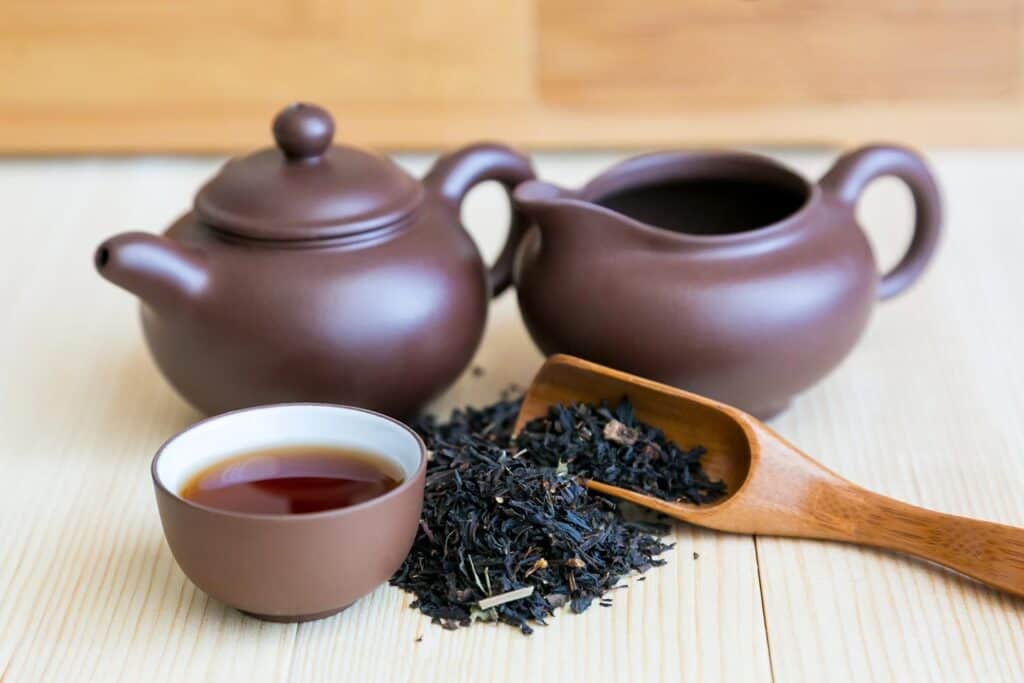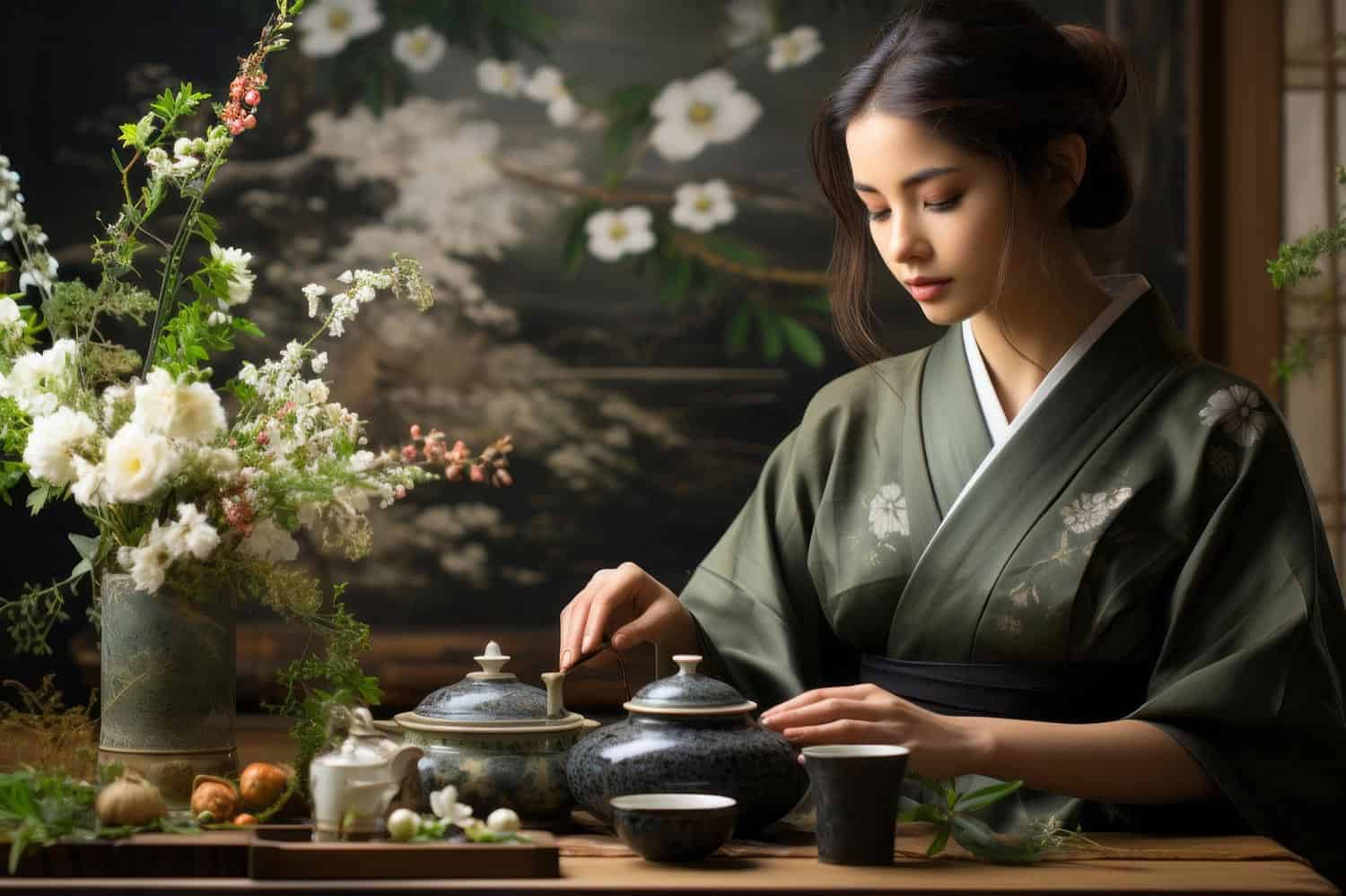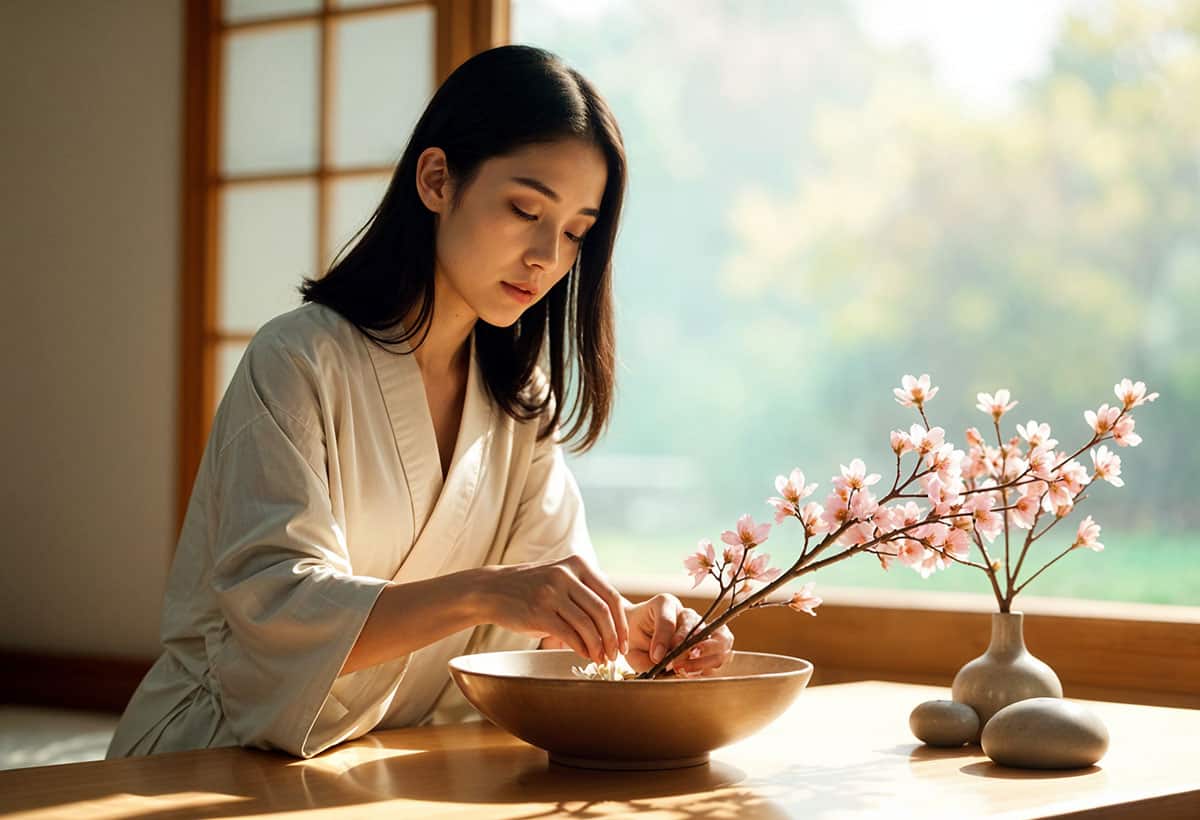In the realm of Japanese culture, the traditional tea ceremony holds a profound significance, embodying harmony, respect, purity, and tranquility. At the heart of this ritual lies the Japanese tea set, a collection of meticulously crafted utensils designed to elevate the tea-drinking experience to an art form.
From the delicate teapot to the serene simplicity of the tea bowls, each component plays a vital role in creating an atmosphere of serene elegance. In this review, I delve into the world of traditional Japanese tea sets, exploring their history, craftsmanship, and the unique cultural essence they bring to tea ceremonies worldwide.
Traditional Japanese Tea Sets History
The history of Japanese tea sets traces back to the 9th century when tea was first introduced to Japan from China. Initially, tea drinking was confined to the aristocratic class, but it gradually spread throughout Japanese society, evolving into a cultural phenomenon.
The tea ceremony, or “chanoyu” in Japanese, became a sacred ritual influenced by Zen Buddhism, emphasizing mindfulness, simplicity, and the appreciation of nature. As the tea ceremony gained prominence, so did the art of crafting tea utensils.
Skilled artisans honed their craft, producing exquisite tea sets characterized by minimalist aesthetics and subtle sophistication.
Craftsmanship and Design
Central to the allure of traditional Japanese tea sets is the unparalleled craftsmanship that goes into their creation. Artisans, known as “chajin,” dedicate years to mastering the techniques passed down through generations. Each piece is meticulously handcrafted, with an emphasis on precision and attention to detail.
The materials used vary but often include ceramics, porcelain, cast iron, and bamboo, each chosen for its aesthetic appeal and functional qualities. From the graceful curves of the teapot to the earthy texture of the tea bowls, every aspect of the tea set is thoughtfully designed to enhance the tea-drinking experience.
The Components
A traditional Japanese tea set typically comprises several key components, each serving a specific purpose in the tea ceremony. The most iconic piece is the teapot, or “kyusu,” which features a handle on the side and a spout for pouring.

The teapot is accompanied by tea bowls, or “chawan,” which are often handmade and vary in size and shape. Other essential utensils include the tea scoop, or “chashaku,” used for measuring tea leaves, and the tea whisk, or “chasen,” used to froth the tea.
Additionally, a tea container, or “natsume,” is used to store powdered green tea, while a water kettle, or “kama,” is employed to heat the water.
Cultural Significance
Beyond their practical function, traditional Japanese tea sets hold profound cultural significance. They serve as a conduit for the principles of harmony, respect, and tranquility espoused by the tea ceremony.
Each element of the tea set symbolizes aspects of nature and the changing seasons, fostering a sense of connection to the natural world. Moreover, the act of preparing and serving tea is imbued with a sense of mindfulness and reverence, encouraging participants to be fully present in the moment.
As such, the tea set becomes not just a collection of utensils but a conduit for spiritual and cultural expression.
Experience of Tea Ceremony
Engaging in a traditional Japanese tea ceremony is a multisensory voyage that involves the mind, body, and spirit. The process unfolds with a series of deliberate movements, from heating the water to whisking the tea to a frothy consistency.
Each gesture is imbued with meaning, inviting participants to cultivate a sense of mindfulness and presence. As the tea is served and sipped, conversation flows freely, punctuated by moments of quiet contemplation. The atmosphere is one of serene elegance, with the soft glow of candlelight and the subtle aroma of incense enveloping the space.
Through the ritual of tea drinking, participants are transported to a realm of tranquility, where time seems to stand still.
My Top 10 Picks Amazon
Conclusion
Traditional Japanese tea sets represent more than just a collection of utensils; they embody centuries of cultural heritage and artistic craftsmanship. From the minimalist design to the meticulous attention to detail, every aspect of the tea set reflects the values of harmony, respect, and tranquility. Whether used in a formal tea ceremony or simply enjoyed as part of daily life, a Japanese tea set elevates the act of tea drinking to an art form, inviting participants to savor each moment with mindfulness and appreciation.
FAQ
Are traditional Japanese tea sets suitable for everyday use?
While traditional Japanese tea sets are often associated with formal tea ceremonies, many people also use them for everyday tea drinking. Their elegant design and practical functionality make them suitable for both special occasions and daily enjoyment.
How do I care for my Japanese tea set?
To preserve the beauty and longevity of your Japanese tea set, it’s essential to handle it with care. Avoid using harsh abrasives or dishwashers, as they can damage delicate surfaces. Instead, gently hand wash the components with warm water and mild soap, then dry them thoroughly with a soft cloth.
Can I use a traditional Japanese tea set with different types of tea?
While Japanese tea sets are traditionally used for preparing and serving green tea, they can also be used with other types of tea, such as black or herbal varieties. However, it’s essential to clean the tea set thoroughly between uses to prevent flavor contamination.
Where can I purchase a traditional Japanese tea set?
Traditional Japanese tea sets can be found at specialty tea shops, online retailers, and artisan markets. When purchasing a tea set, look for reputable sellers who prioritize craftsmanship and authenticity. I am a great fan of Amazon.
What is the significance of the different utensils in a Japanese tea set?
Each utensil in a Japanese tea set serves a specific purpose and holds symbolic significance within the context of the tea ceremony.
For example, the teapot represents hospitality, while the tea bowl symbolizes unity and respect. Understanding the meaning behind each utensil enhances the overall experience of the tea ceremony.
In summary, traditional Japanese tea sets are not merely functional items but works of art that embody centuries of cultural heritage and craftsmanship. From their elegant design to their symbolic significance, each component contributes to a rich and immersive tea-drinking experience.
Whether used in formal ceremonies or everyday rituals, a Japanese tea set elevates the act of tea drinking to a transcendent art form, inviting participants to connect with nature, mindfulness, and the spirit of hospitality.













